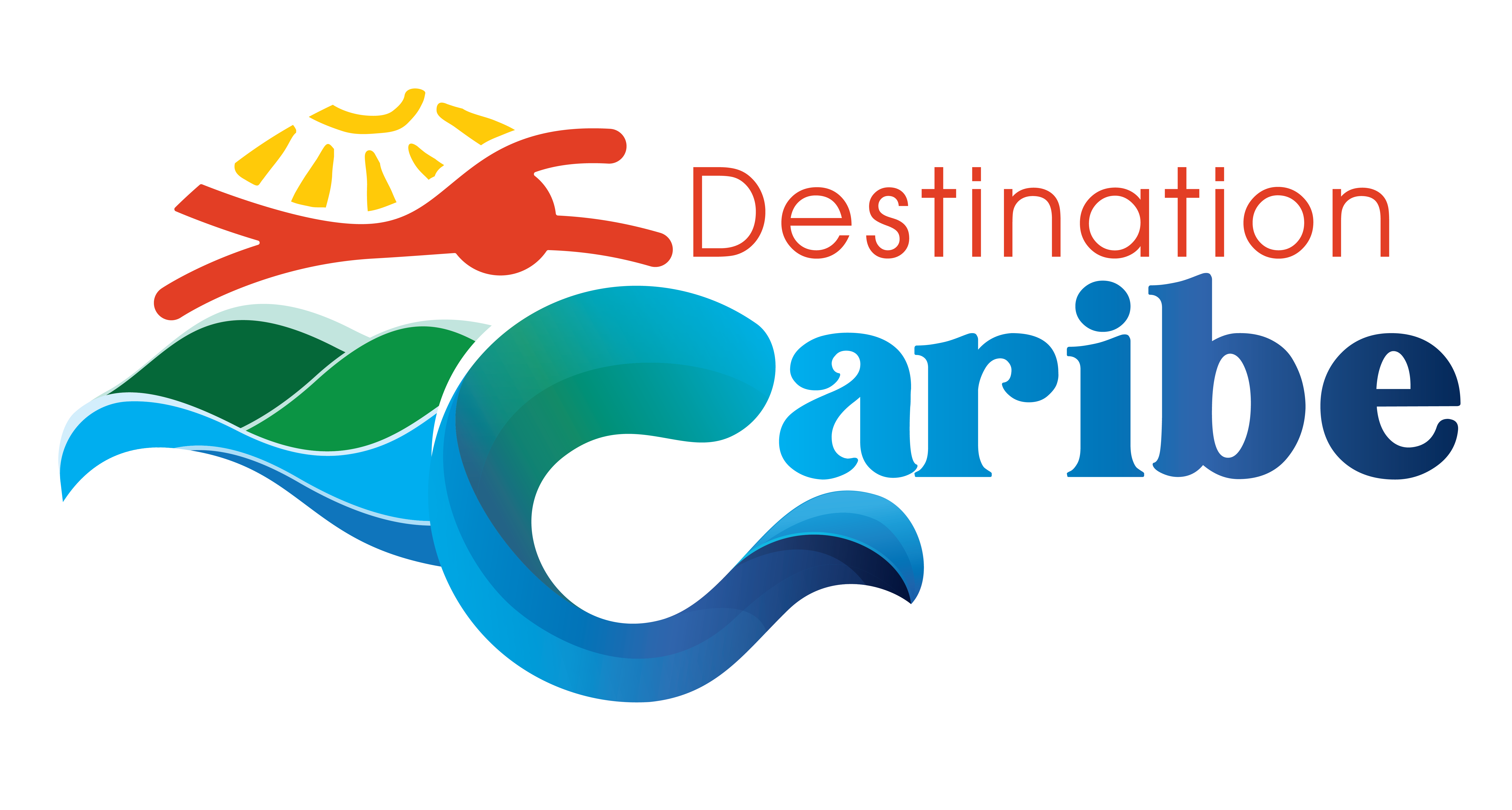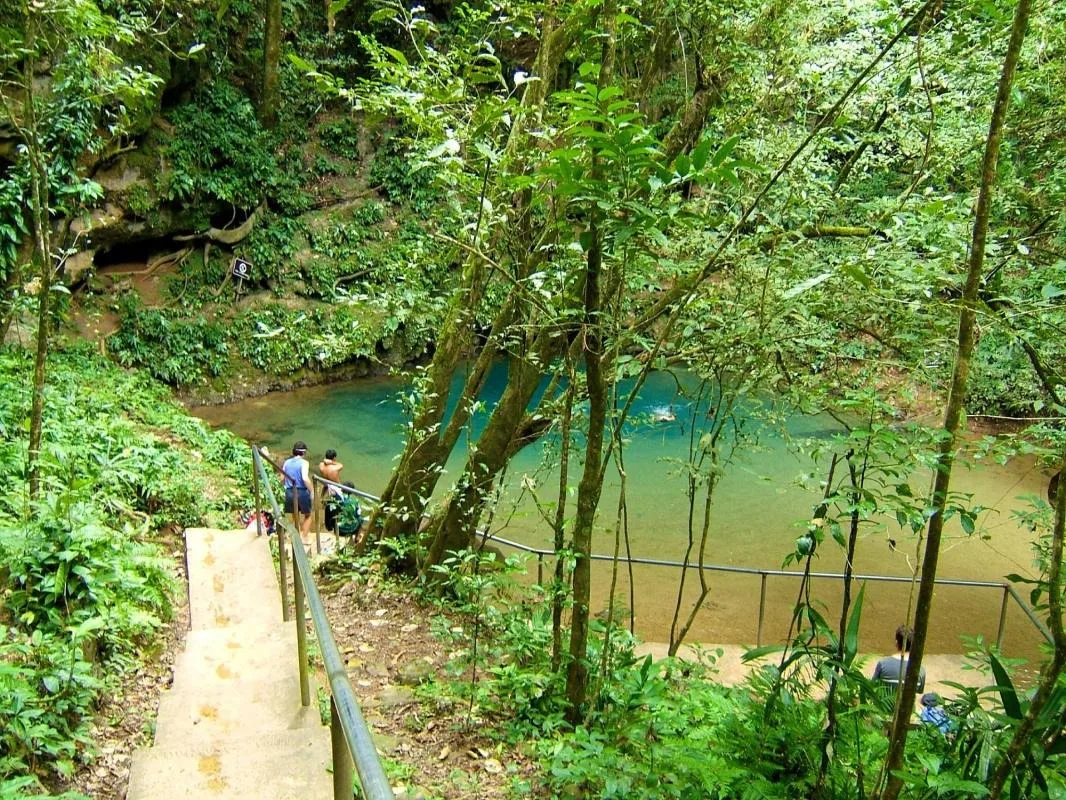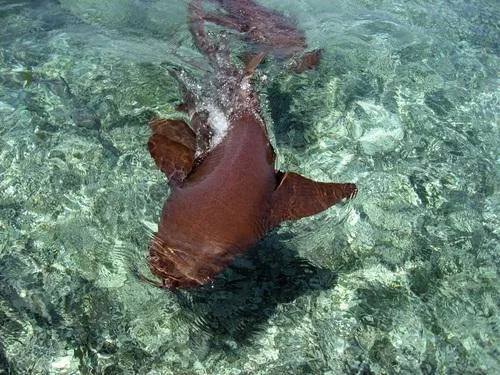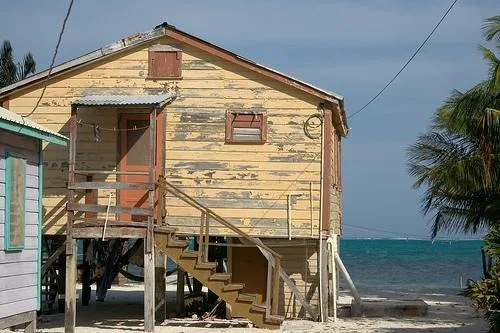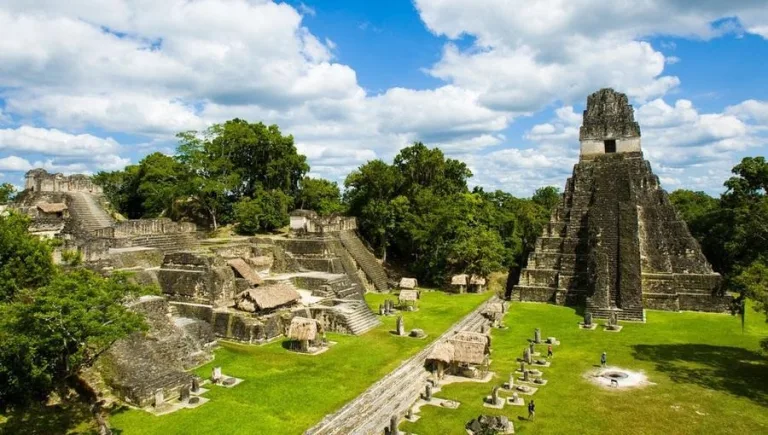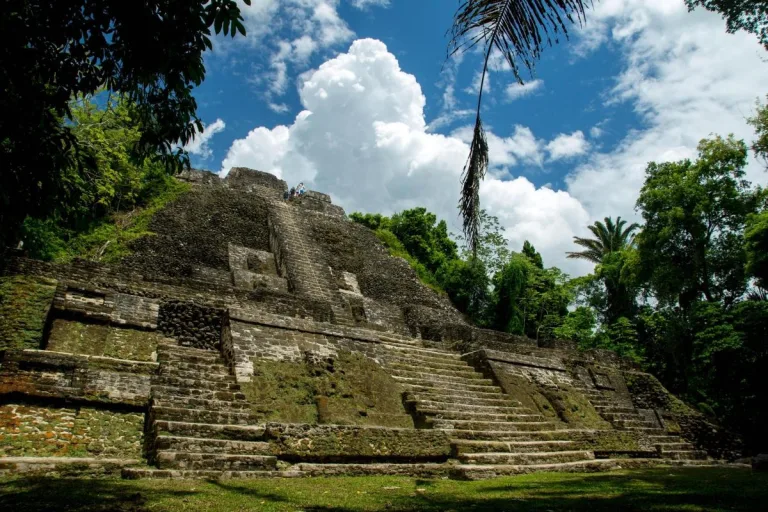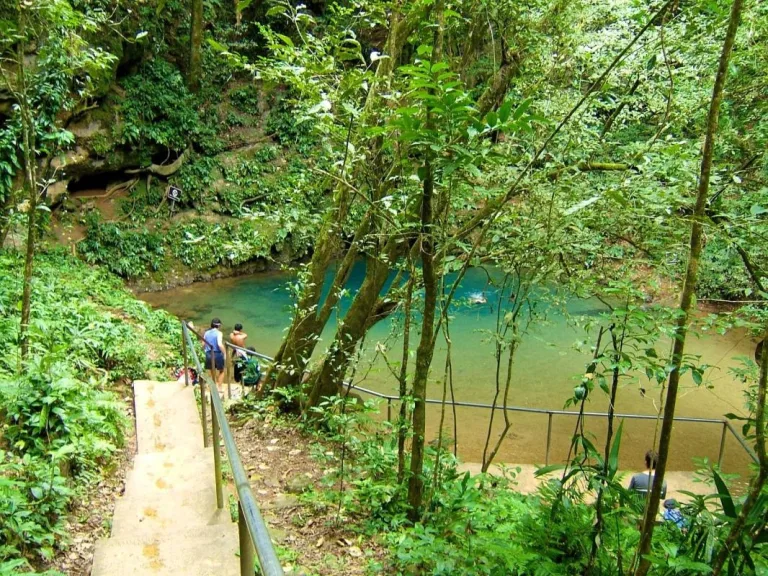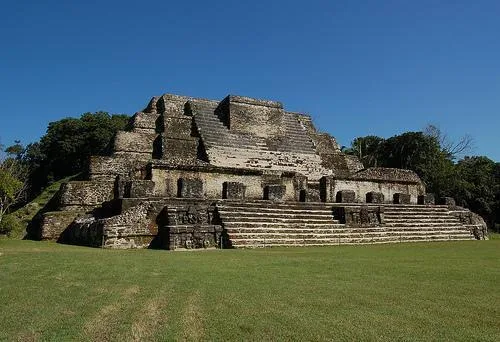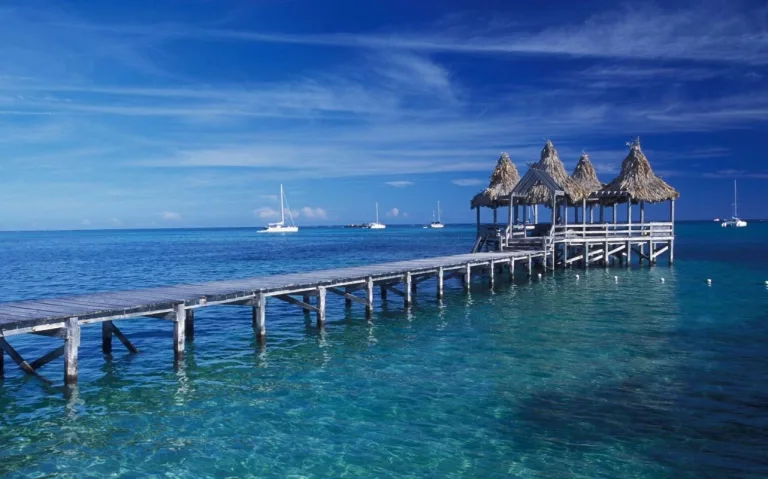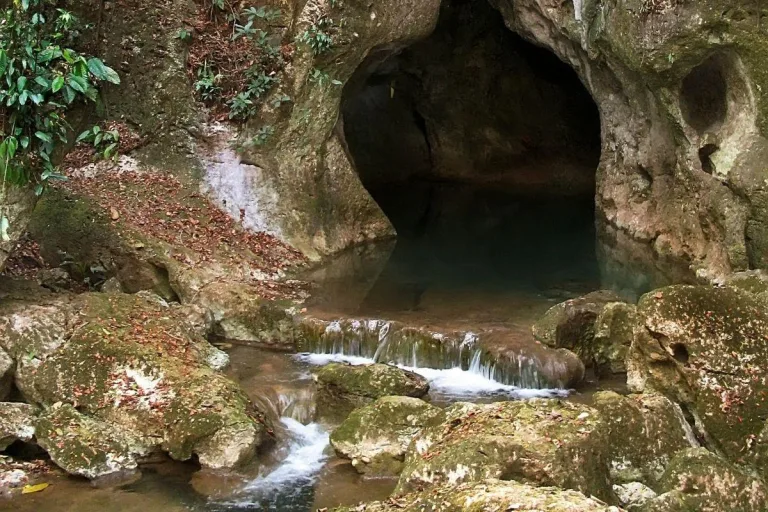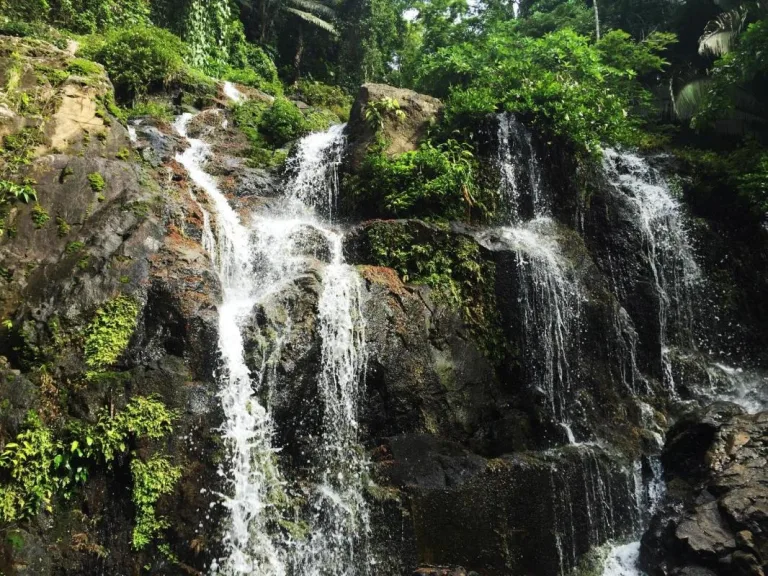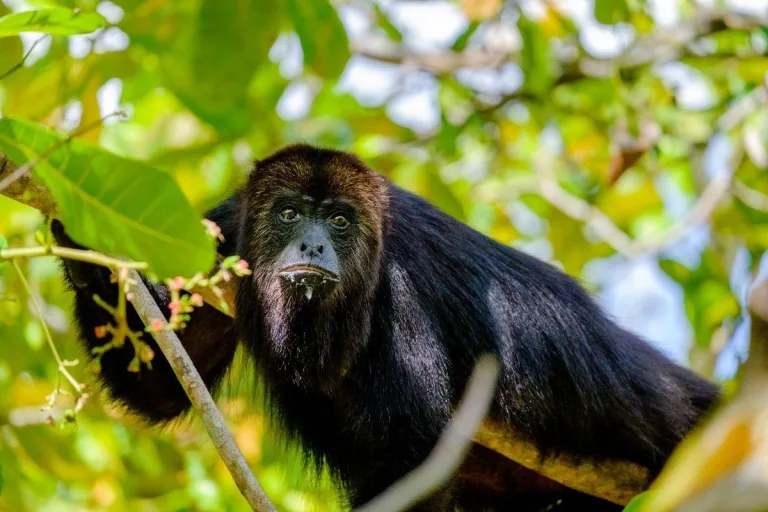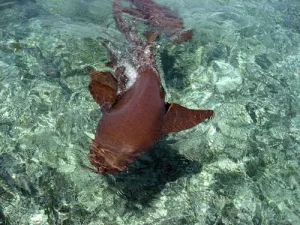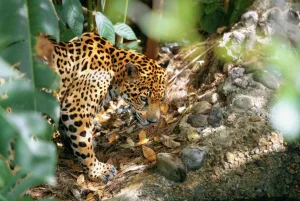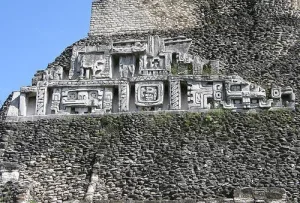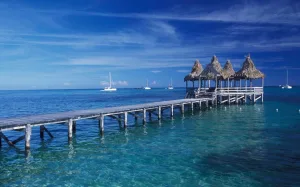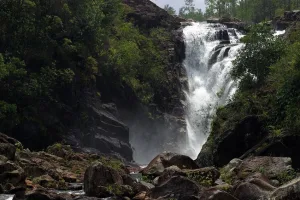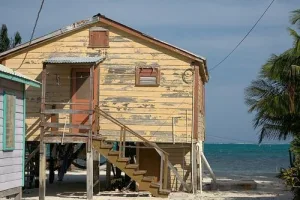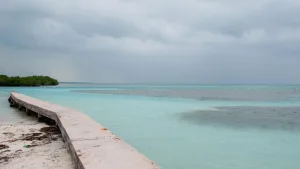Tropical forest surrounds the sapphire cenote after which this national park is named, while two cave systems—Crystal and St. Herman’s—extend across part of the 575-acre (230-hectare site. The park’s caves contain sculptural limestone formations and Maya relics, while above ground, nature trails weave through the jungle foliage.
Travelers exploring solo can follow a self-guided trail that leads a short distance into St. Herman’s Cave. If you want to venture any further—either on foot or on an inner tube—you’ll need to go with a guide. Spelunking excursions into Crystal Cave, which features examples of Maya pottery and glittering calcite crystals, are only possible with a guide and are typically more physically challenging and claustrophobic.
Tours of the park depart from San Ignacio, Belmopan, Hopkins, and Belize City. Itineraries typically include a guided excursion into one of the cave systems, as well as a short jungle hike, and a refreshing dip in the park’s eponymous freshwater pool. If you’re a fan of bird-watching, bring binoculars; keen-eyed visitors can spot many different species perched on branches and vines, including Rufous-tailed jacamars and keel-billed toucans—the national bird of Belize.
- Blue Hole National Park should not be confused with the Great Blue Hole, a UNESCO-listed ocean sinkhole situated in the Belize Barrier Reef.
- Flashlights, which are necessary inside the darkened caves, can be rented from the park’s visitor center.
- Bring water shoes to protect your feet from the rocks underfoot at the Blue Hole and bug repellent to ward off mosquitoes.
- Pack a spare pair of clothes if you’re caving, as you’re likely to get wet and muddy.
Find the visitors center just off the Hummingbird Highway, about 11 miles (18 kilometers) from Belmopan. From the center, trails lead to St. Herman’s Cave. The Blue Hole is about a 45-minute hike from the visitor center.
Mosquitoes are more prevalent during the rainy season (between May and mid-November) and heavy rains can make the water of the Blue Hole murkier than usual, so it’s better to visit in the dry season (mid-November–April) if possible.
